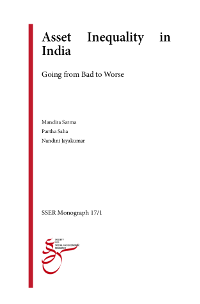Analysing household level data from three consecutive All India Debt and Investment Surveys (AIDIS) covering a period of two decades (1991-92 to 2012-13), this study finds that inequality in asset ownership in India has risen during this period. While inequality has risen in both rural and urban India, urban inequality is much higher, and the pace towards higher inequality is much faster in urban than in rural India. The growing inequality, in both rural and urban India, was mostly driven by highly unequal holding of land and buildings, the two most important forms in which Indian households hold their wealth. In terms of asset accumulation, there was no improvement for socially marginalised groups (Dalit, Adivasi and Muslim) relative to others (non-Dalit, non-Adivasi and non-Muslim), as others continued to own, on an average, more than double the assets of Dalit, Adivasi and Muslim households during the entire two decades. Non-Dalit, non-Adivasi and non-Muslim households remain a highly heterogeneous group, with much higher within group inequality than the marginalised groups.
See the full monograph here.
Recommended citation:
Sarma, Mandira, Saha, Partha and Jayakumar, Nandini (2017), Asset Inequality in India: Going from Bad to Worse, SSER Monograph 17/1, Society for Social and Economic Research, New Delhi (available at: http://archive.indianstatistics.org/sserwp/sserwp1701.pdf).

